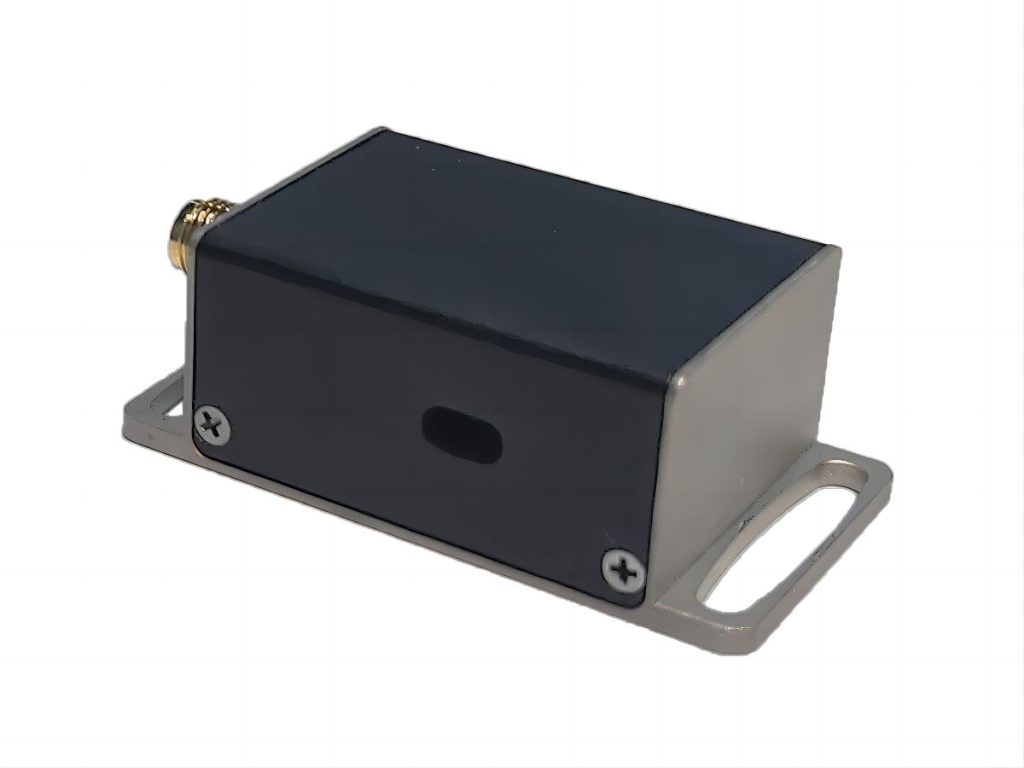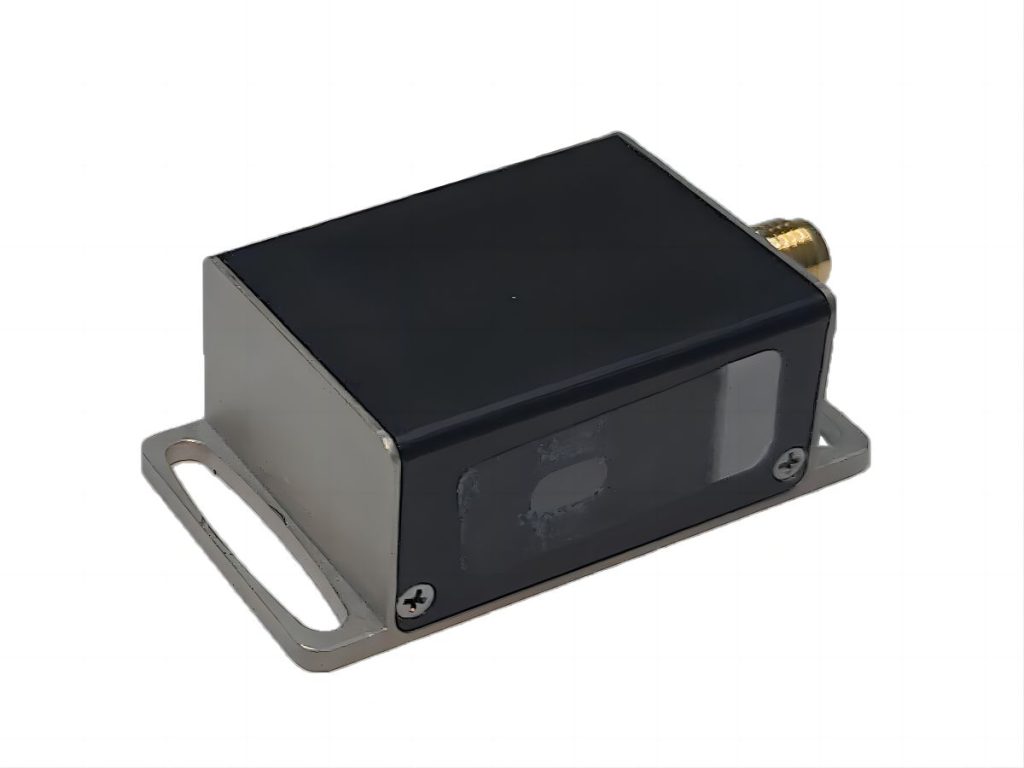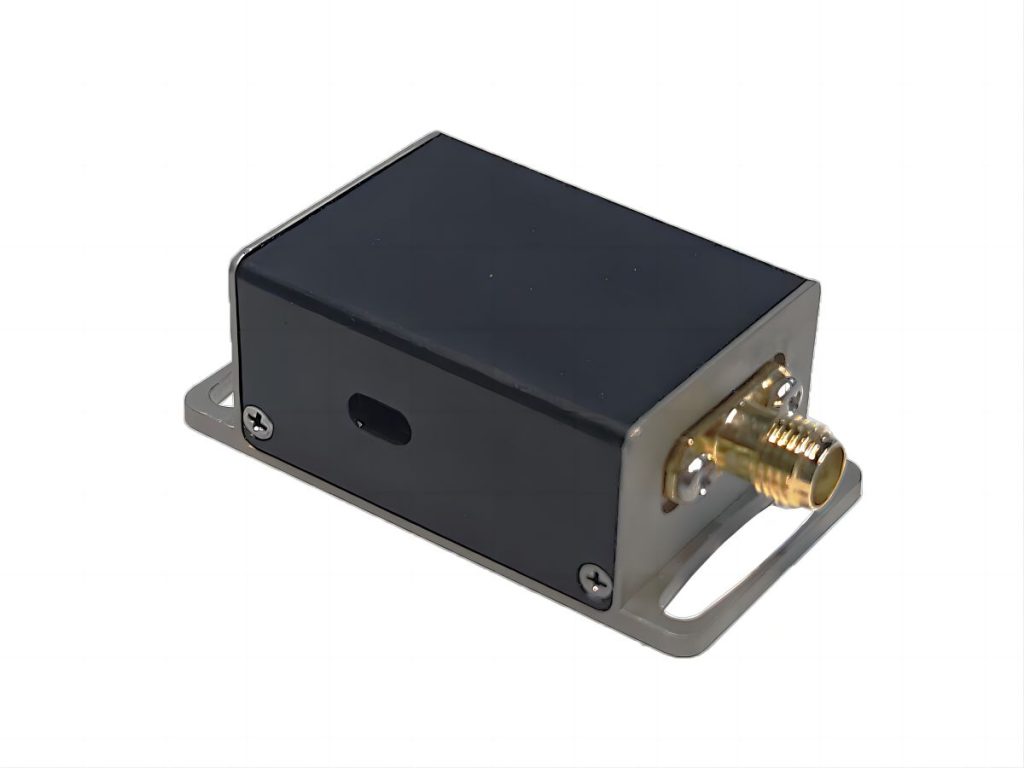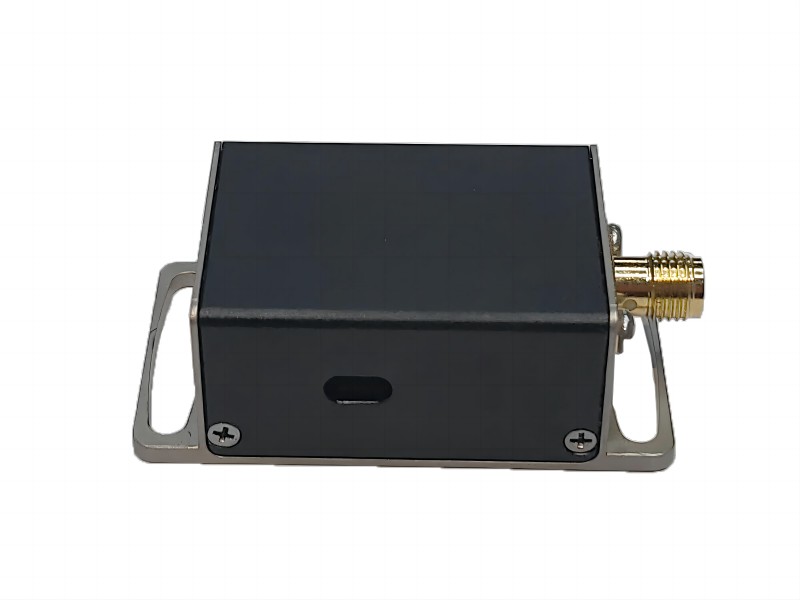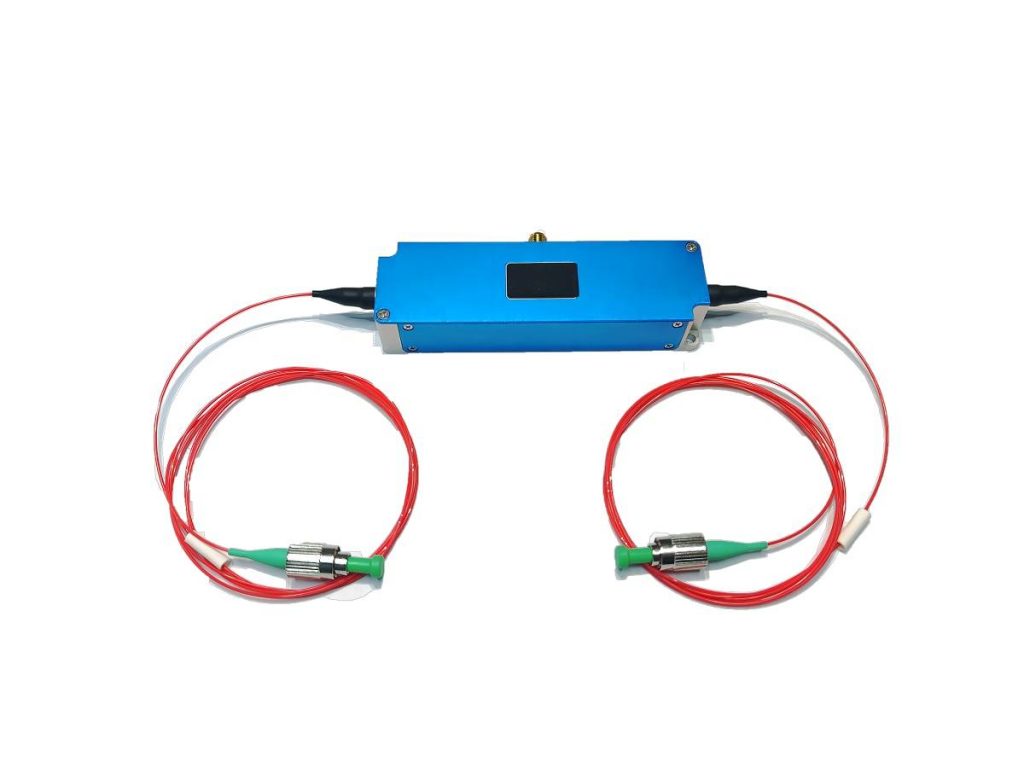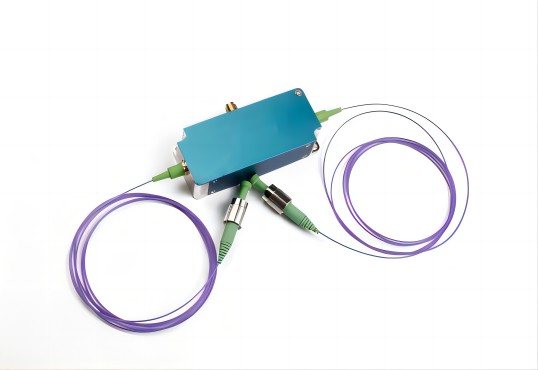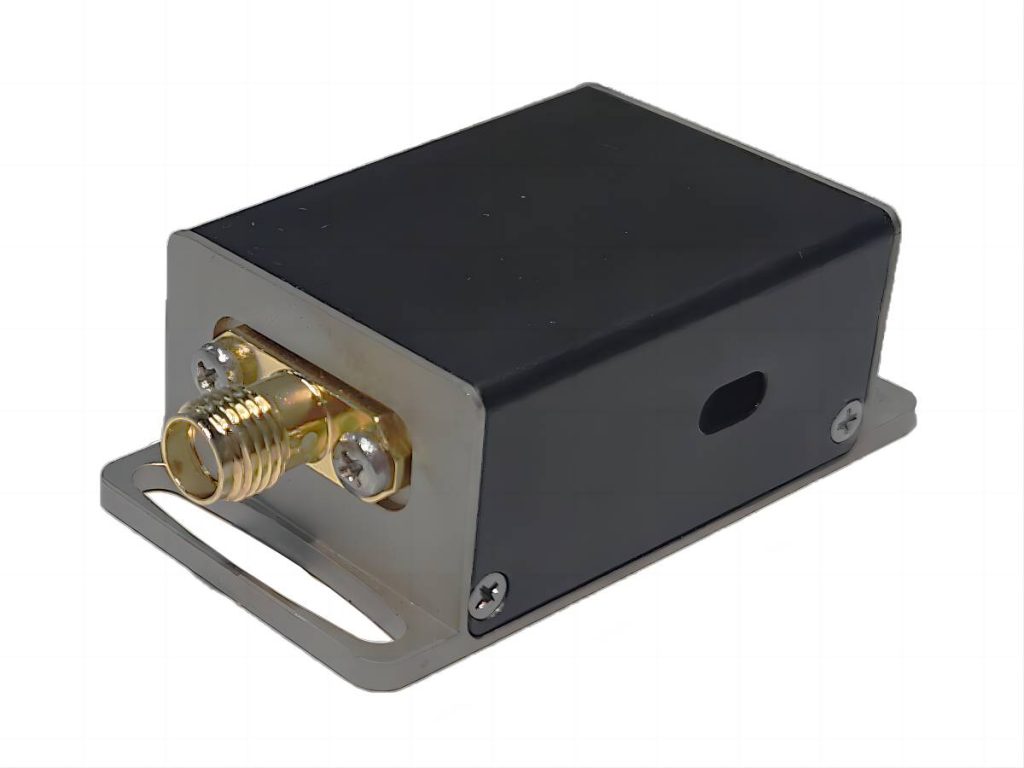Acousto-optic Deflectors: Principles, Applications, and Resolution
The acousto-optic deflector (AOD) is a valuable instrument within the field of optics, employing the interaction between sound waves and light waves to achieve the deflection of laser beams. This article delves into the core operating principle of acousto-optic deflectors, explores their key characteristics and diverse applications, and analyzes the factors influencing their resolution, a crucial performance metric.
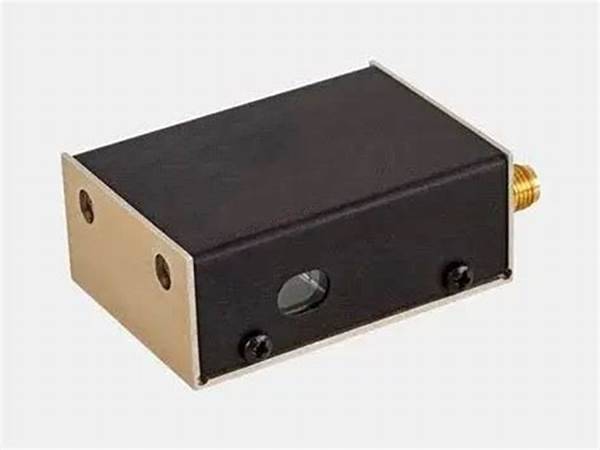
Working Principle of Acousto-optic Deflectors
An AOD leverages the acousto-optic effect, which manifests when sound waves propagate through a specific medium, typically a crystal or glass. This sound wave propagation induces a periodic variation in the refractive index of the medium. The refractive index dictates how light bends as it travels through a material. A periodic variation in the refractive index essentially creates a dynamic grating within the medium. When a laser beam interacts with this dynamic grating, it undergoes a phenomenon known as diffraction, causing the beam to split in various directions. By strategically controlling the sound wave’s frequency, the angle of the diffracted light beam can be manipulated, effectively achieving the desired deflection of the laser beam.
The acousto-optic deflector’s operation can be broken down into four fundamental steps:
- Ultrasonic Wave Generation: An electrical signal is converted into an ultrasonic wave using the principle of piezoelectricity. Piezoelectric materials exhibit the property of generating sound waves when subjected to an electric field. This generated ultrasonic wave propagates through the AOD’s medium.
- Refractive Index Variation: As the ultrasonic wave travels through the medium, it induces periodic fluctuations in the medium’s refractive index. This creates a dynamic grating structure within the medium.
- Light Beam Diffraction: The incident laser beam interacts with the dynamic grating, causing it to diffract. Diffraction refers to the phenomenon where a wave encountering an obstacle or a periodic structure deviates from its straight-line propagation path and separates into multiple beams.
- Deflection Angle Control: By adjusting the frequency of the ultrasonic wave, the AOD can manipulate the angle of the diffracted laser beam. This allows for precise control over the deflection direction of the laser beam.
Key Characteristics of Acousto-optic Deflectors
Acousto-optic Deflectors boast several key characteristics that make them valuable in various optical applications:
- Broad Diffraction Bandwidth: AODs possess a wide range of frequencies over which they can efficiently diffract light. This extensive bandwidth allows for the manipulation of a broad spectrum of laser beam wavelengths.
- Linear Relationship Between Deflection Angle and Driving Frequency: The deflection angle of the diffracted laser beam exhibits a direct linear relationship with the frequency of the driving ultrasonic wave. This linear relationship simplifies the control and calibration of the AOD for achieving specific deflection angles.
- Continuous Scanning Capability: AODs are capable of continuously scanning a laser beam within a predefined deflection angle range. This continuous scanning ability makes them ideal for applications requiring high-speed and precise beam positioning.
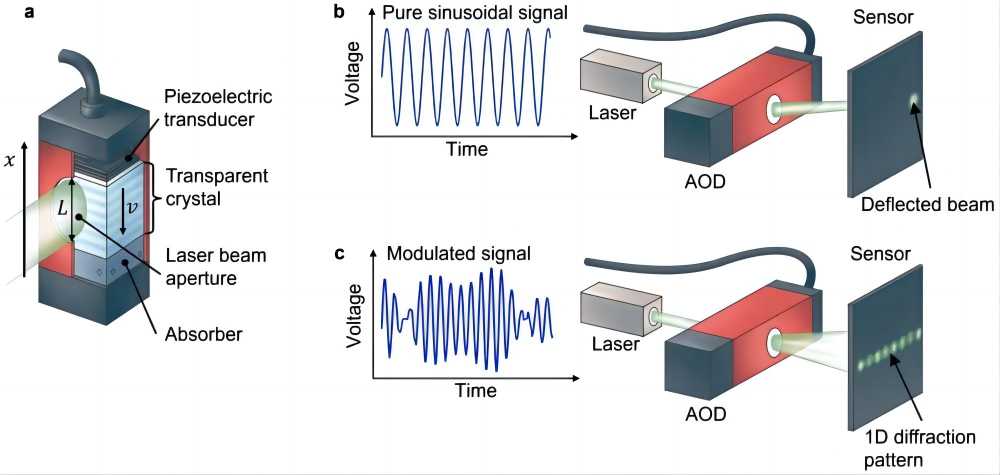
Applications of Acousto-optic Deflectors
- Beam Control and Scanning: AODs excel in high-speed and high-precision beam scanning tasks. This makes them suitable for applications such as laser scanning, optical signal processing, and fiber optic communication. In laser scanning, AODs can be employed to rapidly direct a laser beam across a surface for various purposes, including material processing, barcode reading, and 3D scanning. In optical signal processing, AODs can be used to manipulate and route light signals within optical circuits. Within fiber optic communication systems, AODs can be utilized for tasks like beam steering and mode selection.
- Spectrum Analysis: AODs play a role in spectrum analyzers, instruments used to measure the power distribution of various frequencies within a signal. AODs can facilitate the simultaneous processing of multiple frequency components within a signal, accelerating the analysis process.
- Imaging Technology: AODs contribute to advancements in optical imaging and microscopy techniques. They enable rapid and precise image scanning and control, leading to enhanced image acquisition and analysis capabilities.
- Precision Laser Processing: AODs are instrumental in precision laser processing, a technology used for intricate and high-accuracy material manipulation using lasers. AODs play a critical role in various industries, including automotive, machinery, and aerospace, by enabling precise laser beam control for tasks like micromachining, welding, and cutting.
Factors Affecting the Resolution of Acousto-optic Deflectors
Resolution is a crucial parameter that evaluates the performance of an AOD. It refers to the number of distinct light spots that can be distinguished within a specific deflection angle range. Several factors influence the resolution of an AOD:
- Acousto-optic Material: The material chosen for the AOD’s medium significantly impacts its resolution. Commonly used materials include lead molybdate (PbMoO4) crystals, tellurium dioxide (TeO2) glasses, and acousto-optic glasses like flint glass. These materials are preferred due to their high refractive index, slow sound velocity, and ability to operate effectively over a wide range of frequencies. For instance, PbMoO4 crystals are widely used in high-frequency applications due to their exceptional acousto-optic figure of merit, which combines the material’s diffraction efficiency and material properties.
- Ultrasonic Frequency: As mentioned earlier, the ultrasonic frequency dictates the period of the dynamic grating formed within the AOD’s medium. This period, in turn, influences the deflection angle of the diffracted laser beam. However, a higher ultrasonic frequency also leads to a narrower angular spread of the diffracted beam. This narrower spread translates to a higher resolution, as more distinct light spots can be resolved within a specific deflection angle range.
- Laser Beam Divergence Angle: The divergence angle of the incident laser beam also plays a role in AOD resolution. A laser beam with a smaller divergence angle, signifying a more collimated and focused beam, contributes to improved resolution. A wider divergence angle leads to a larger illuminated area on the dynamic grating, resulting in a broader spread of the diffracted beam and consequently, lower resolution. Through collimation and focusing techniques, the laser beam’s divergence angle can be optimized to enhance the AOD’s resolution.
- Design and Manufacturing Process: The design and manufacturing processes employed in AOD construction can significantly impact resolution. The selection of the piezoelectric transducer material, which converts the electrical signal into an ultrasonic wave, is crucial. The quality of the manufacturing techniques used to create the acousto-optic device, particularly the bonding process between the piezoelectric transducer and the acousto-optic medium, is also critical. Precise alignment and a strong bond between these components minimize signal losses and ensure efficient light diffraction, leading to a higher resolution.
- Driving Power and Frequency Bandwidth: The driving power supplied to the AOD and the frequency bandwidth of the driving signal influence the range of signals the AOD can handle. An appropriate combination of driving power and frequency bandwidth ensures that the AOD maintains a high diffraction efficiency across a broader deflection angle range. This, in turn, contributes to improved resolution by allowing for the generation of well-defined diffracted beams within a wider range of deflection angles.
- Application Scenario: The specific application in which the AOD is employed can also influence the prioritization of resolution. In applications like optical communication, where high deflection speeds and beam stability are paramount, resolution might not be the primary concern. However, in applications like laser scanning, where the ability to distinguish minute details is critical, achieving high resolution becomes a top priority.
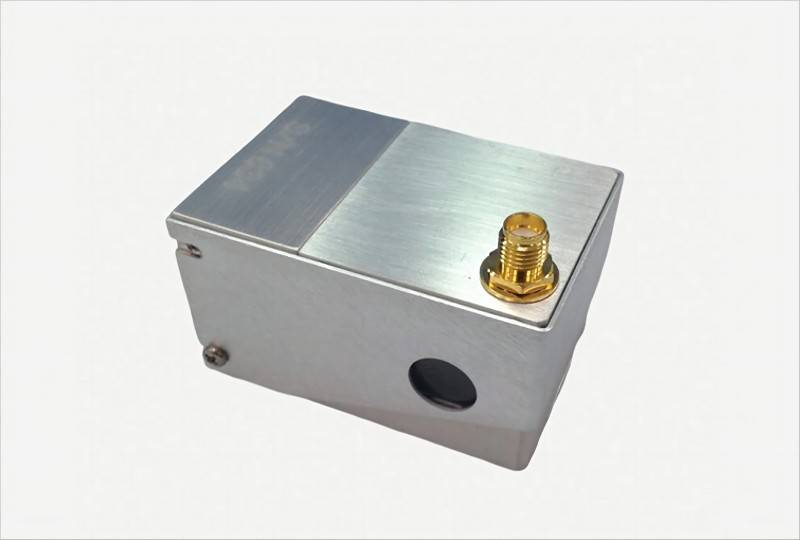
In conclusion, AODs are invaluable tools in the realm of optics, offering exceptional beam control and deflection capabilities. Their diverse applications span various fields, from laser processing and communication to imaging and spectrum analysis. Understanding the factors affecting their resolution is crucial for selecting the most suitable AOD for a specific application. As AOD technology continues to progress, we can expect even more powerful and versatile AODs to emerge, shaping the future of various optical applications.

